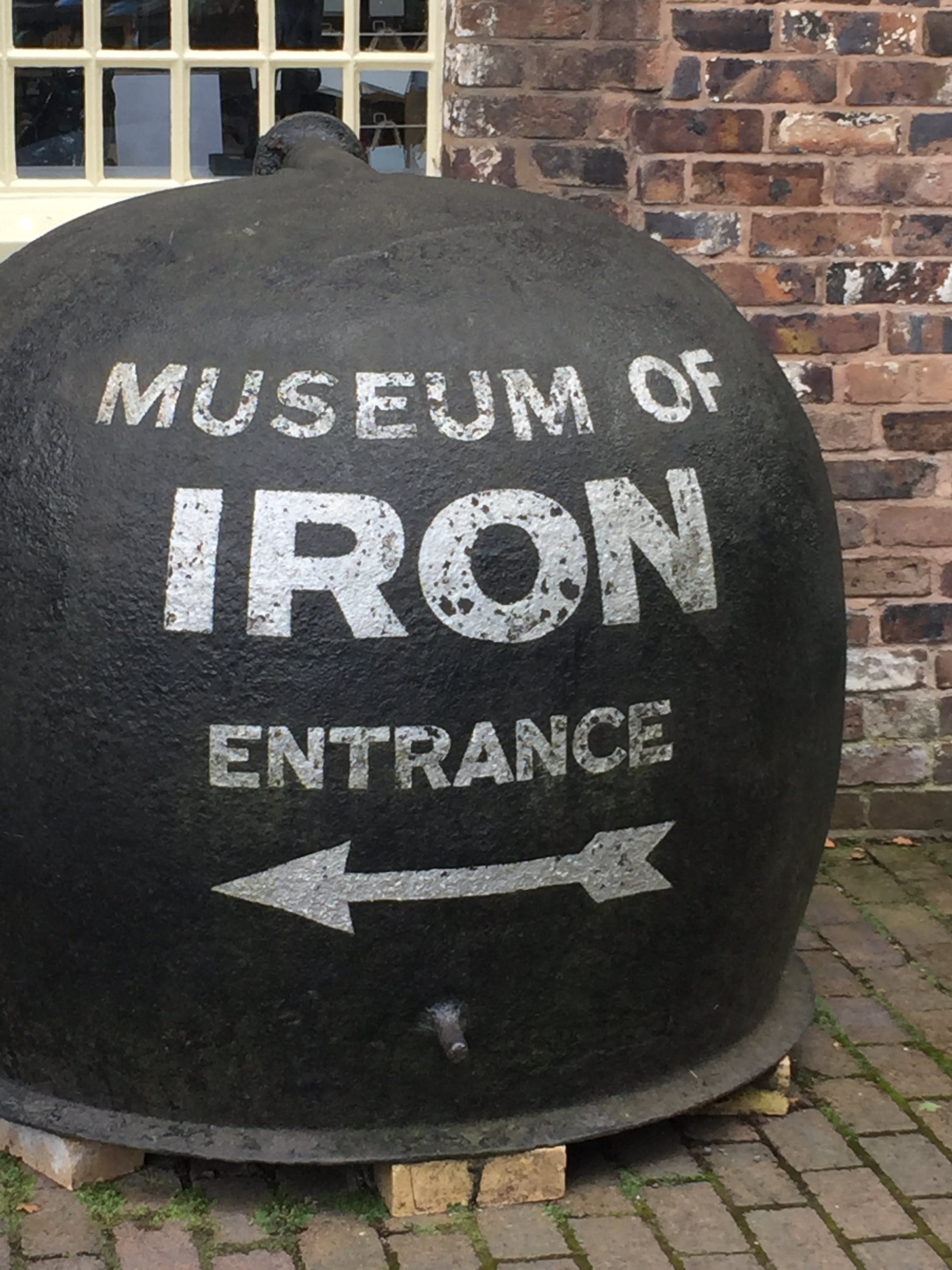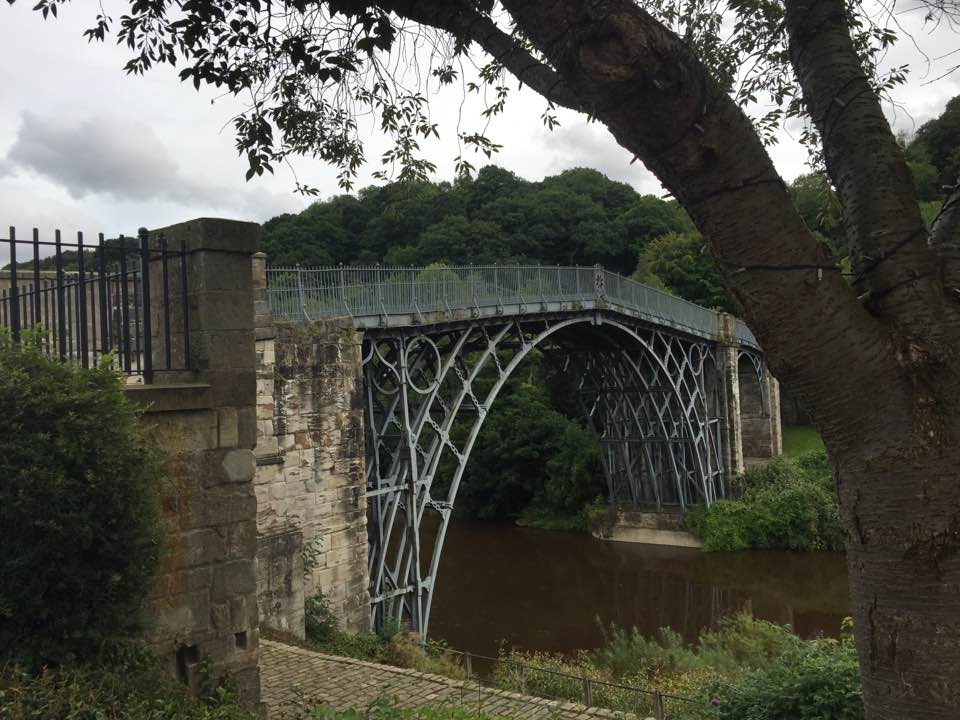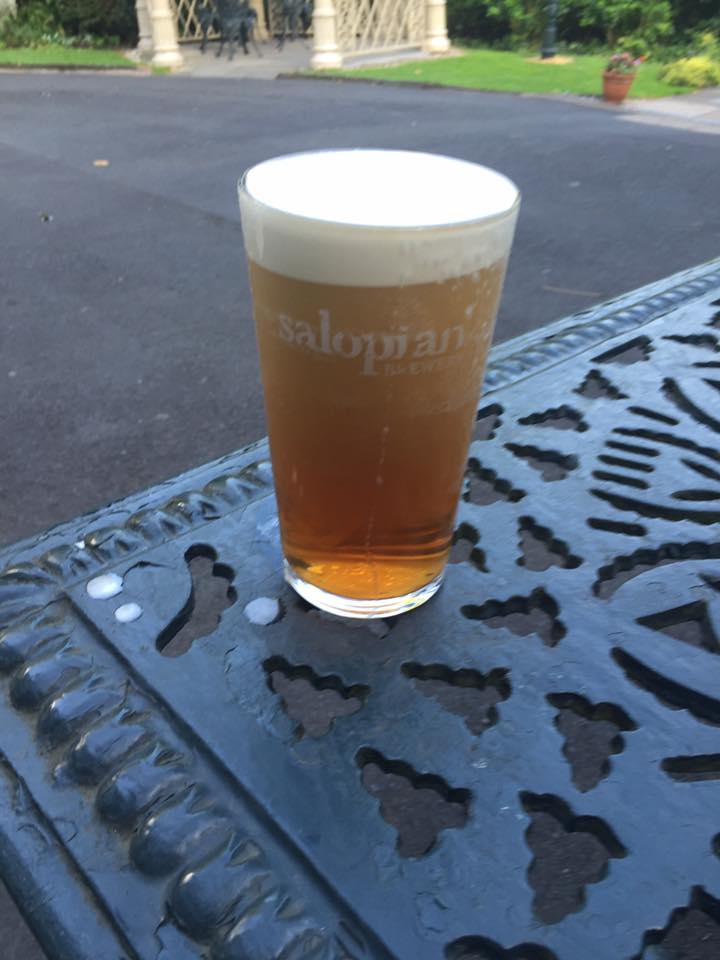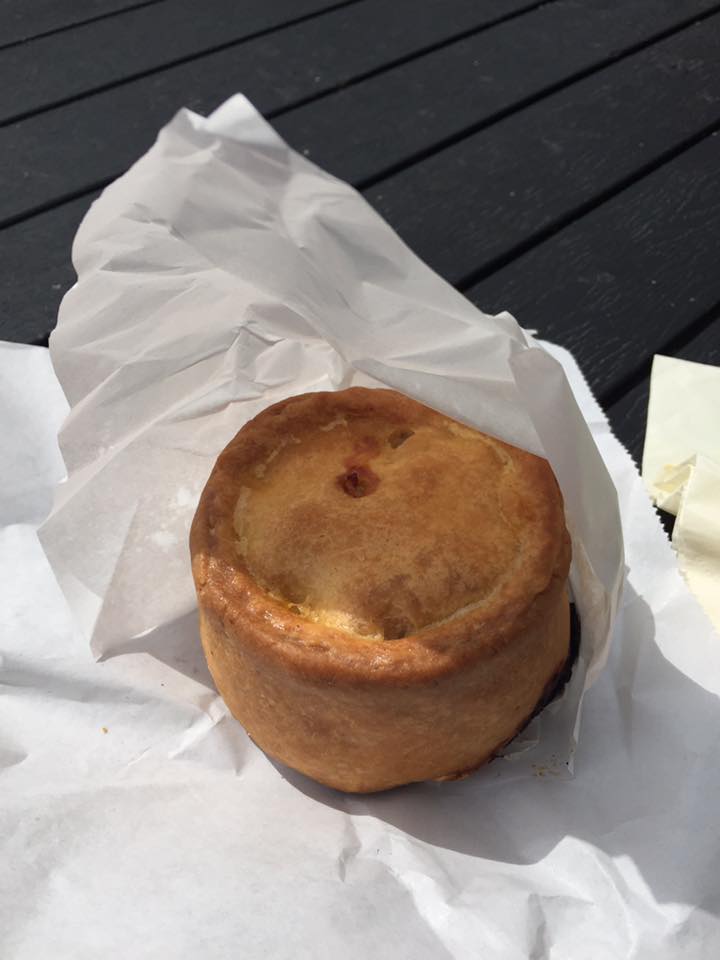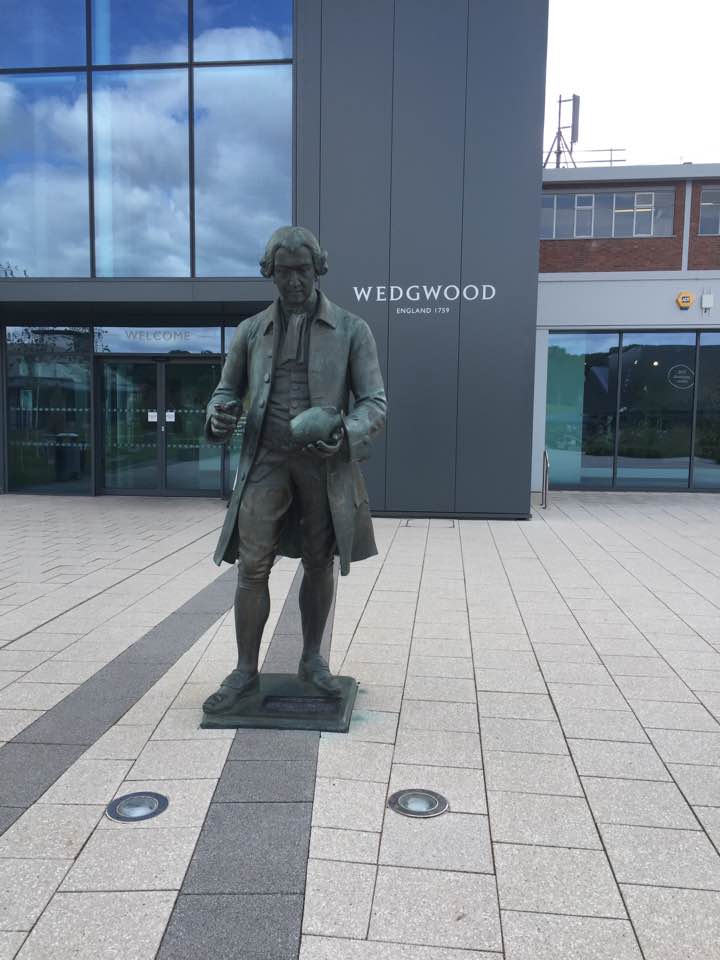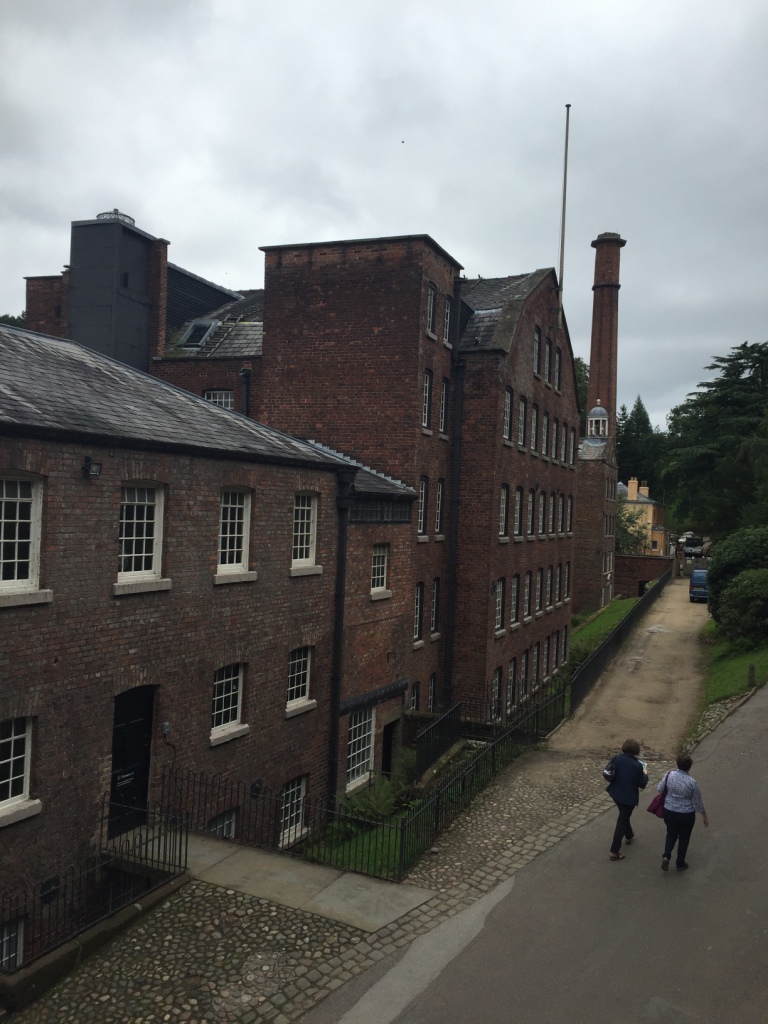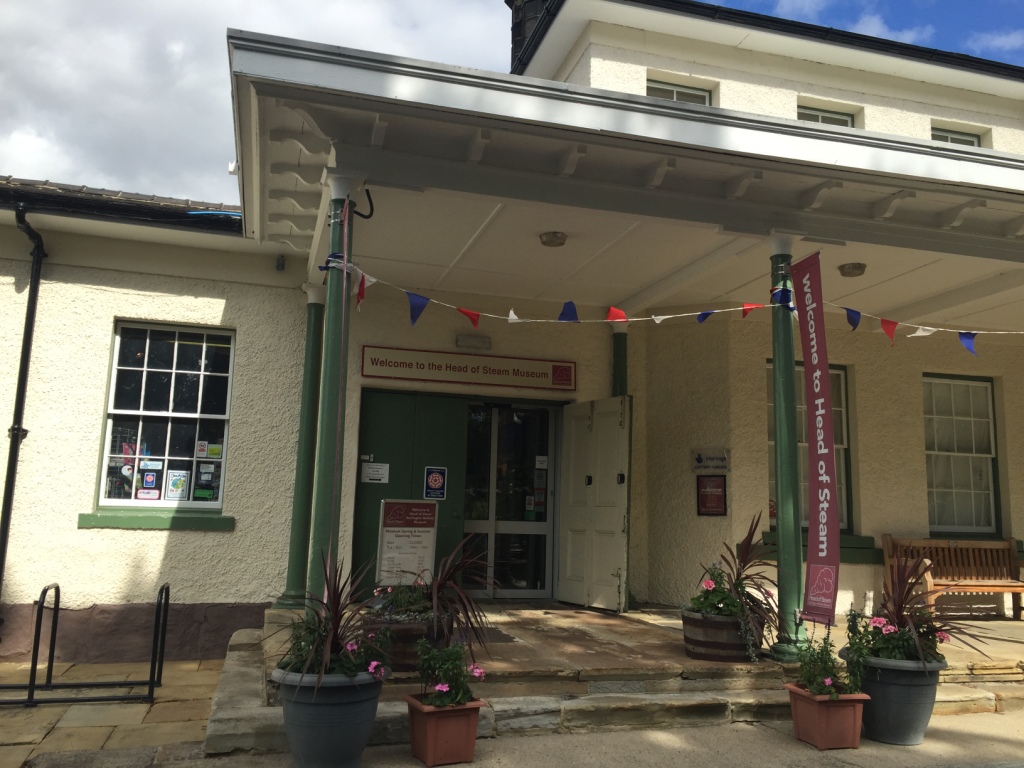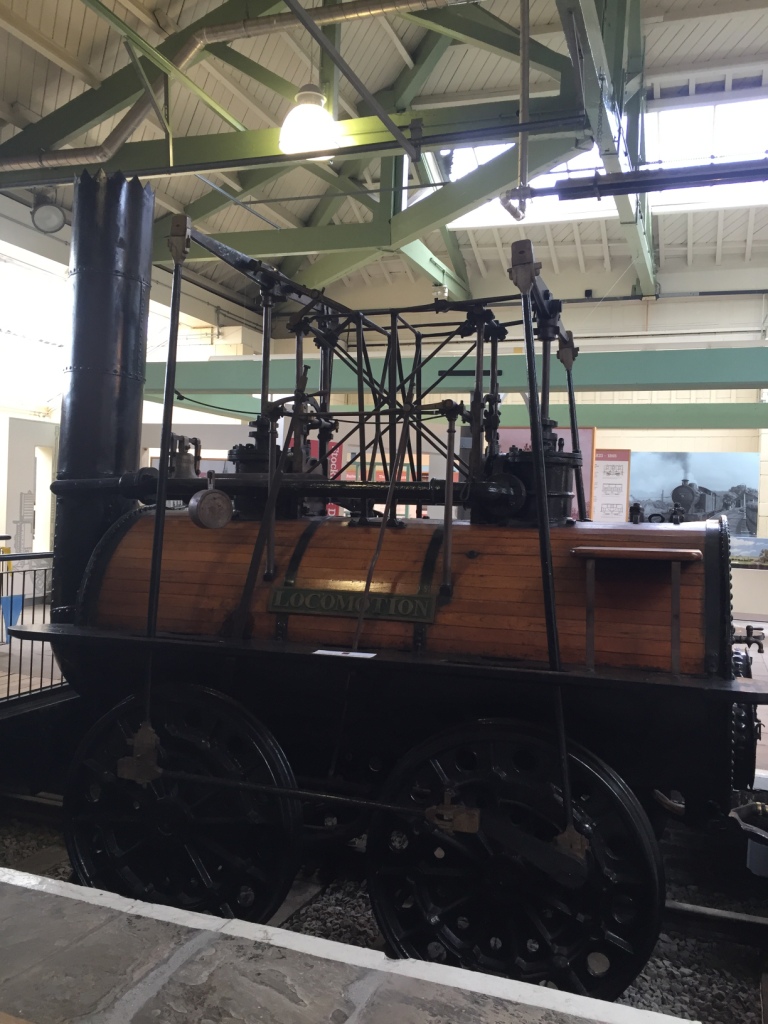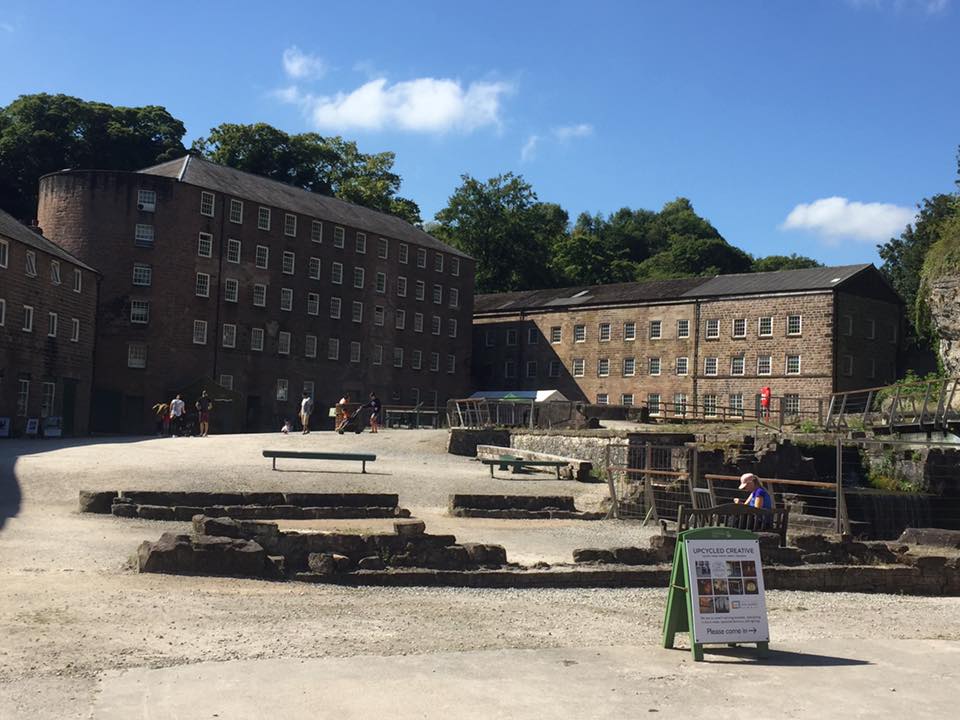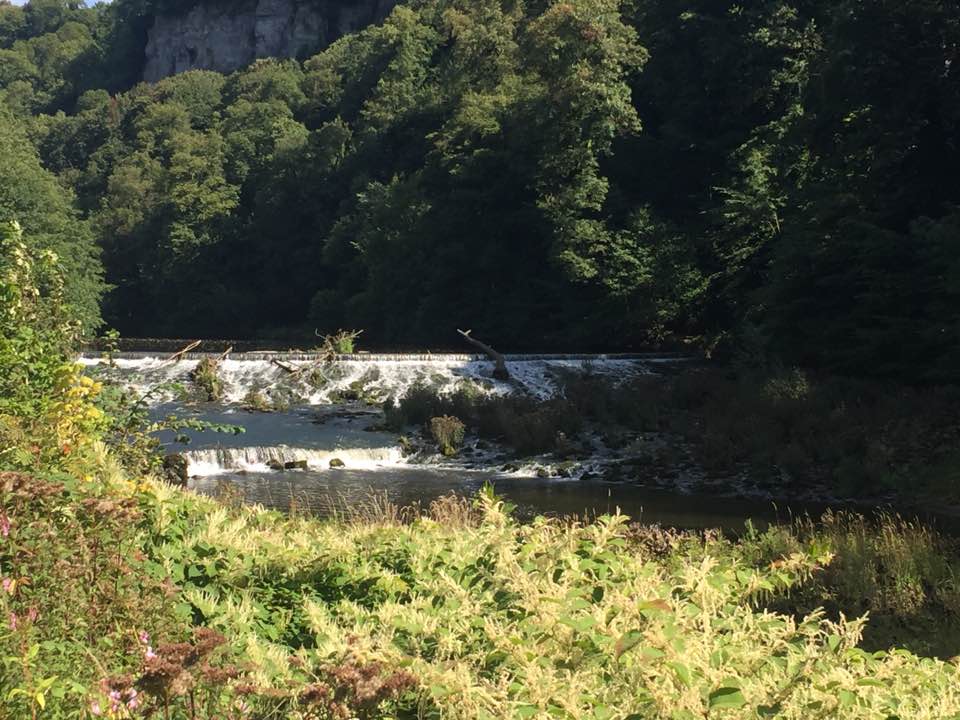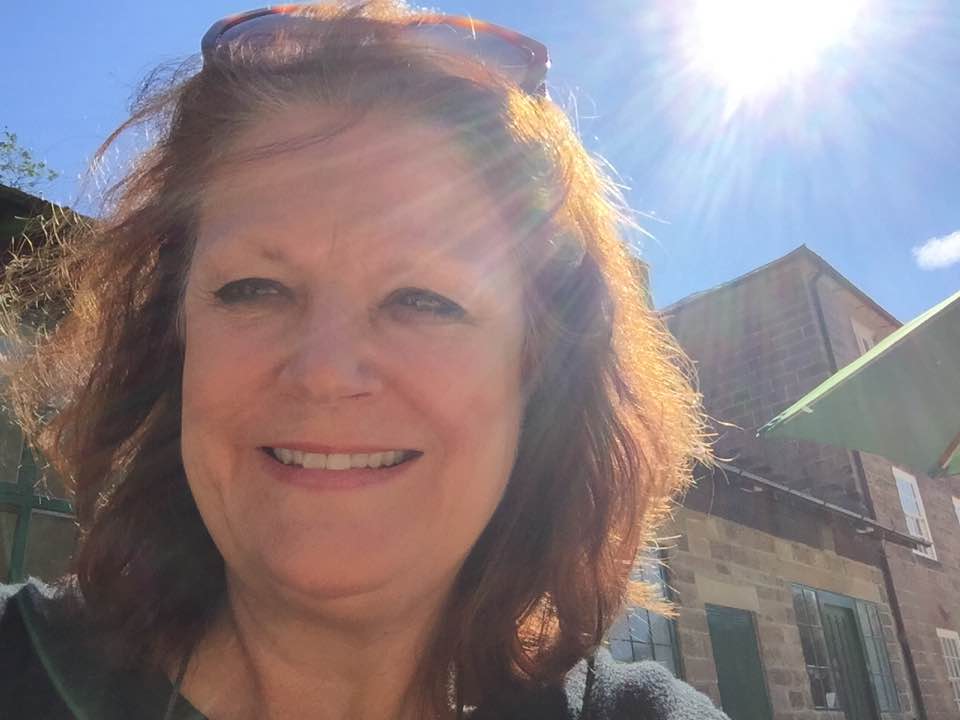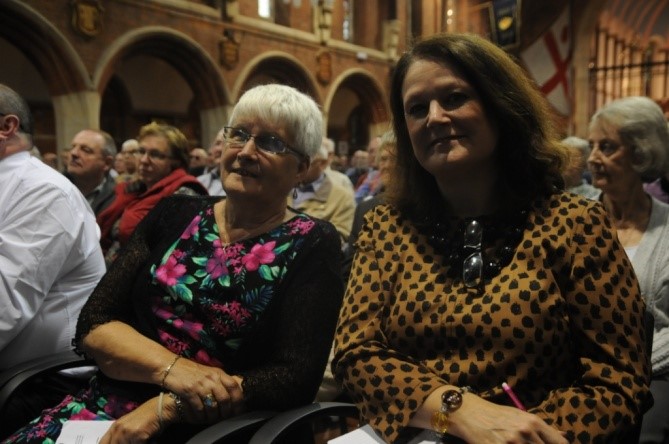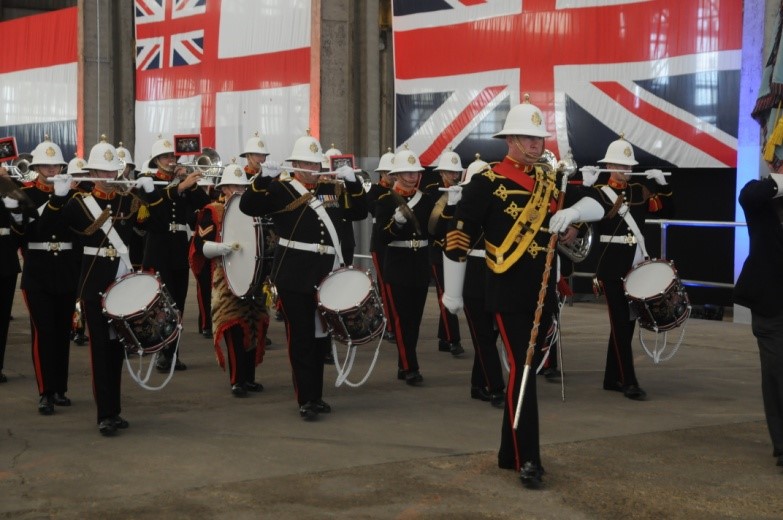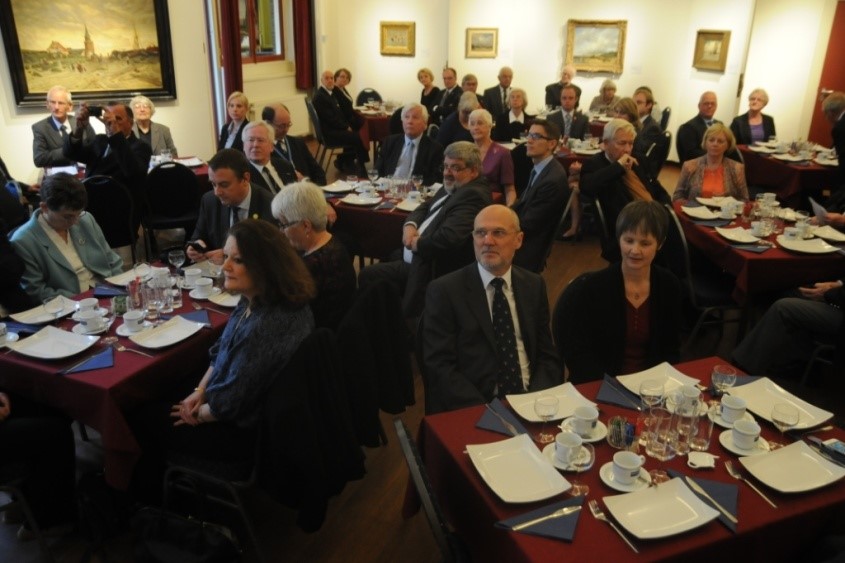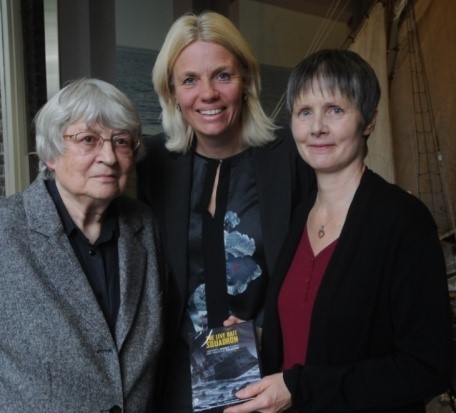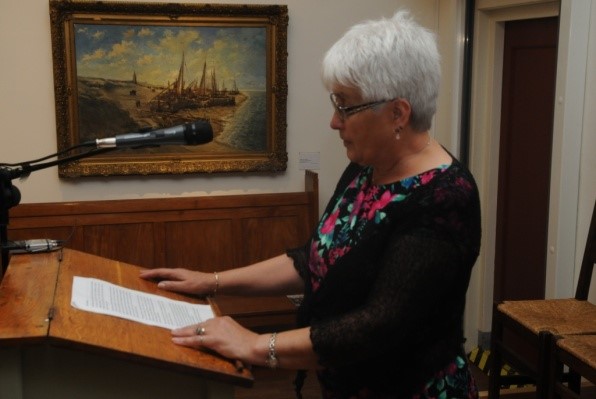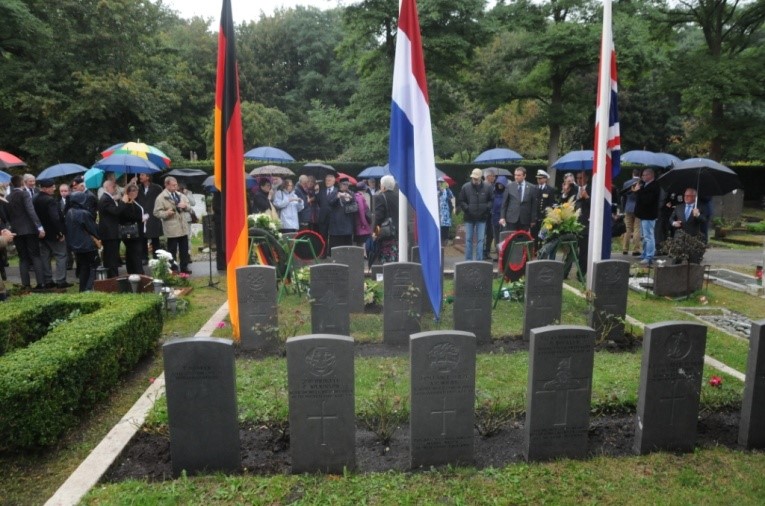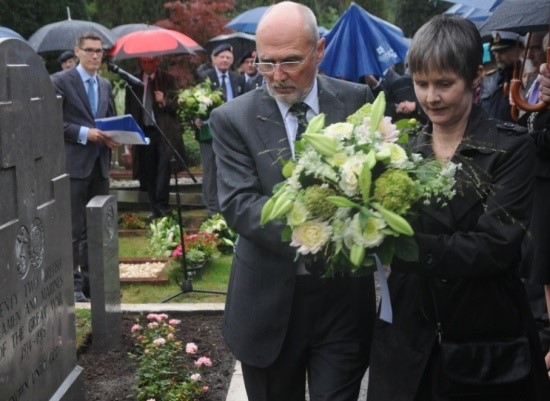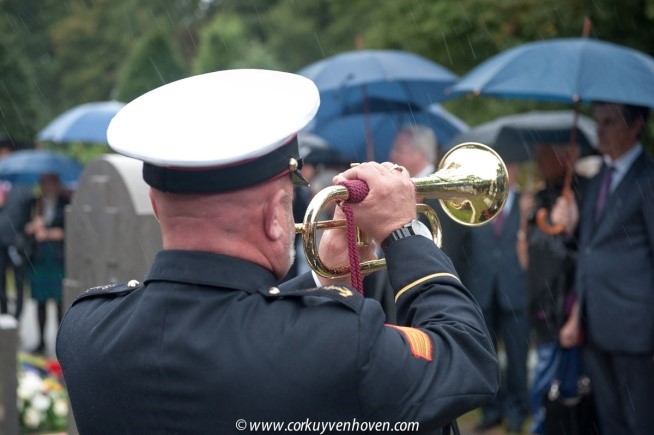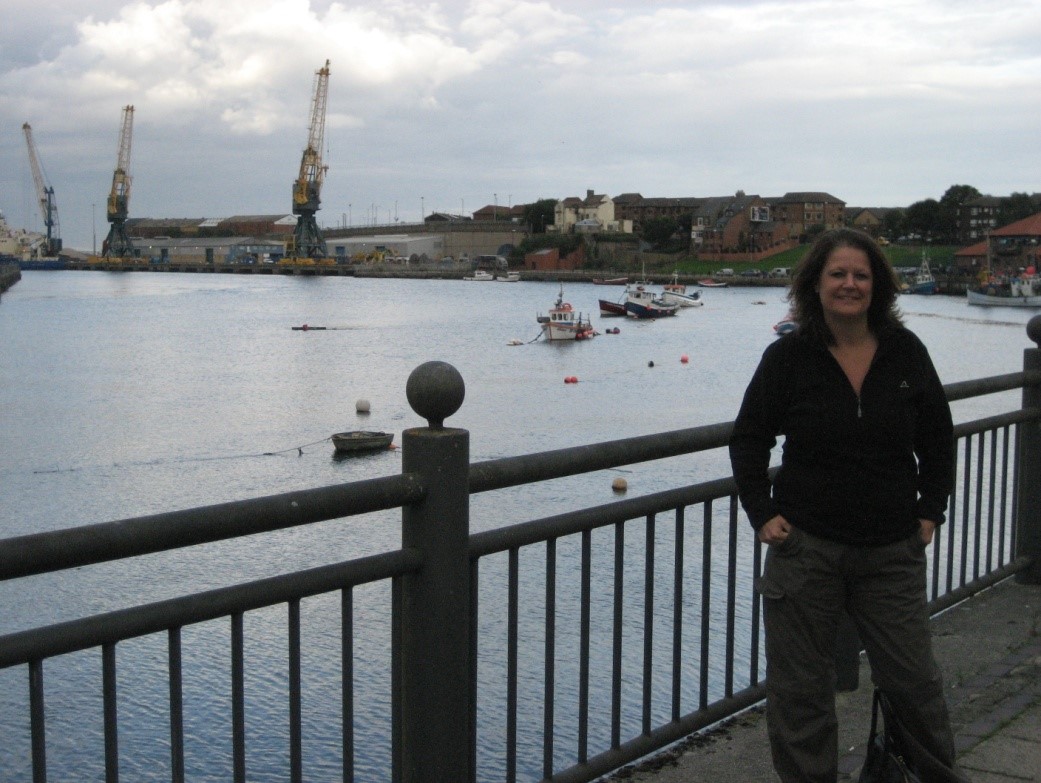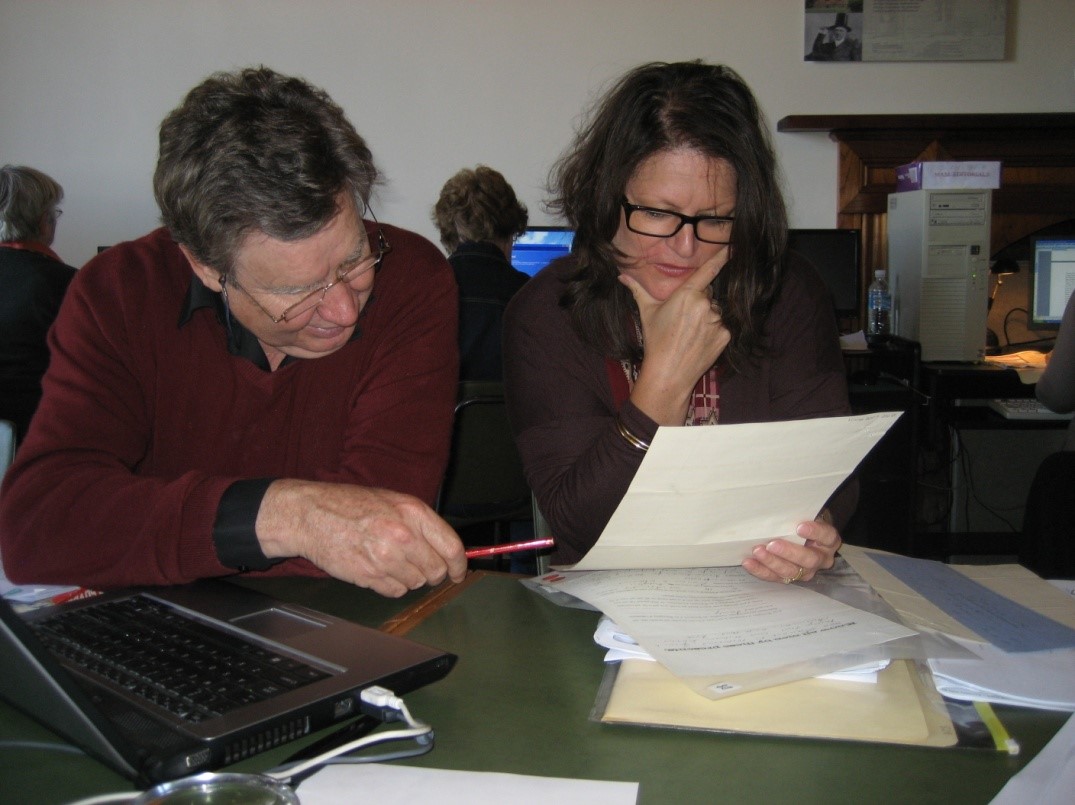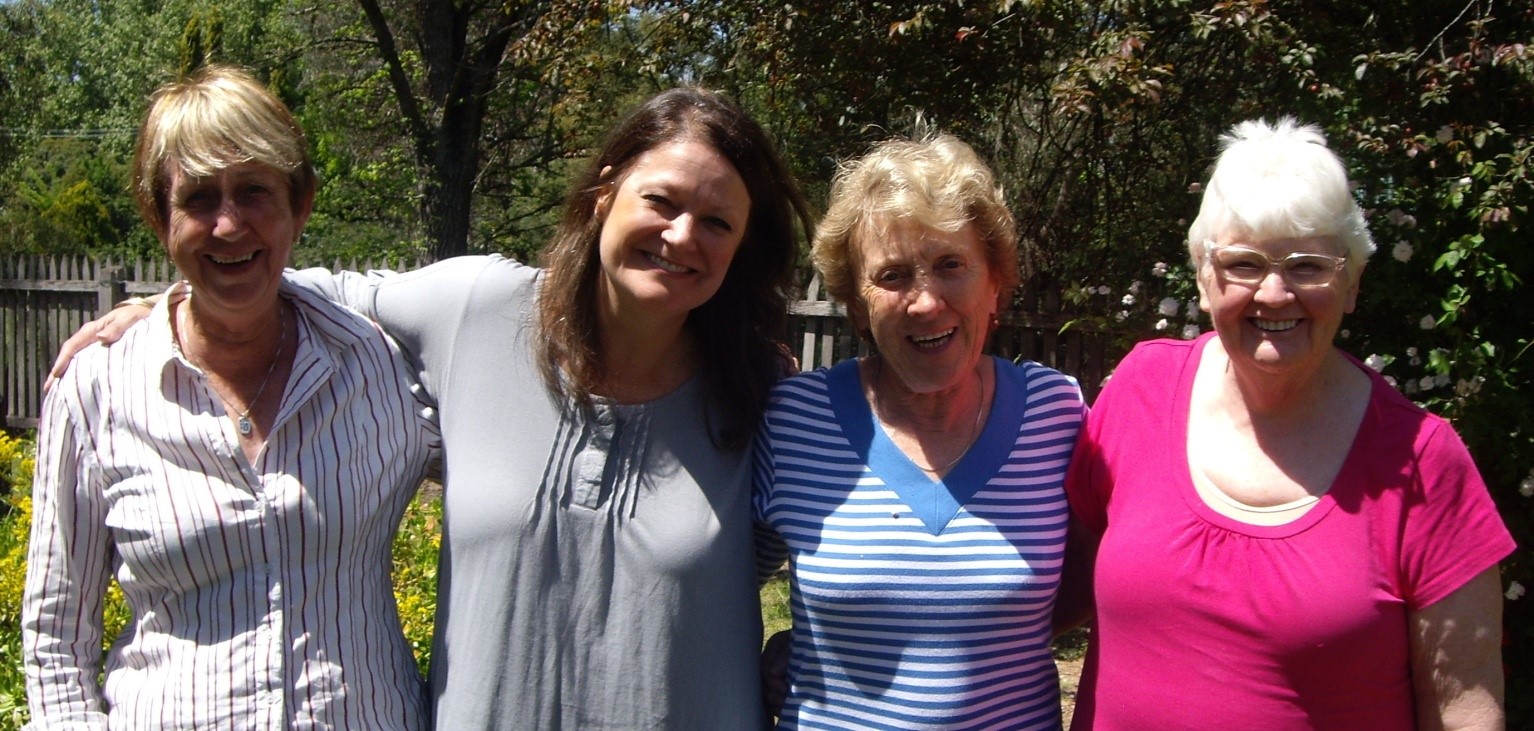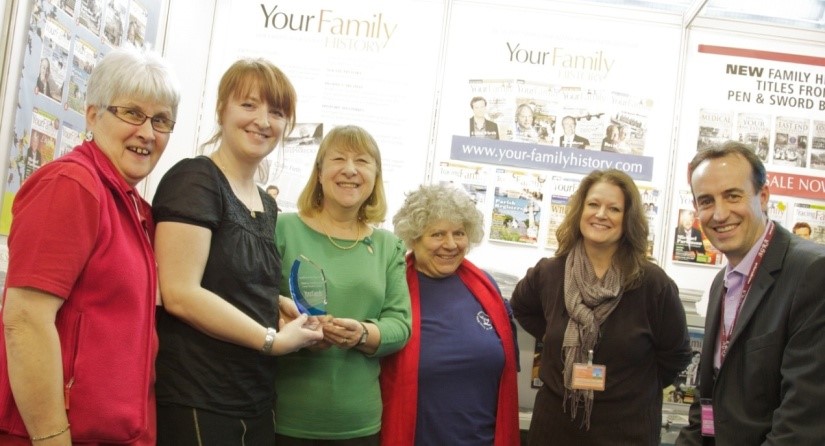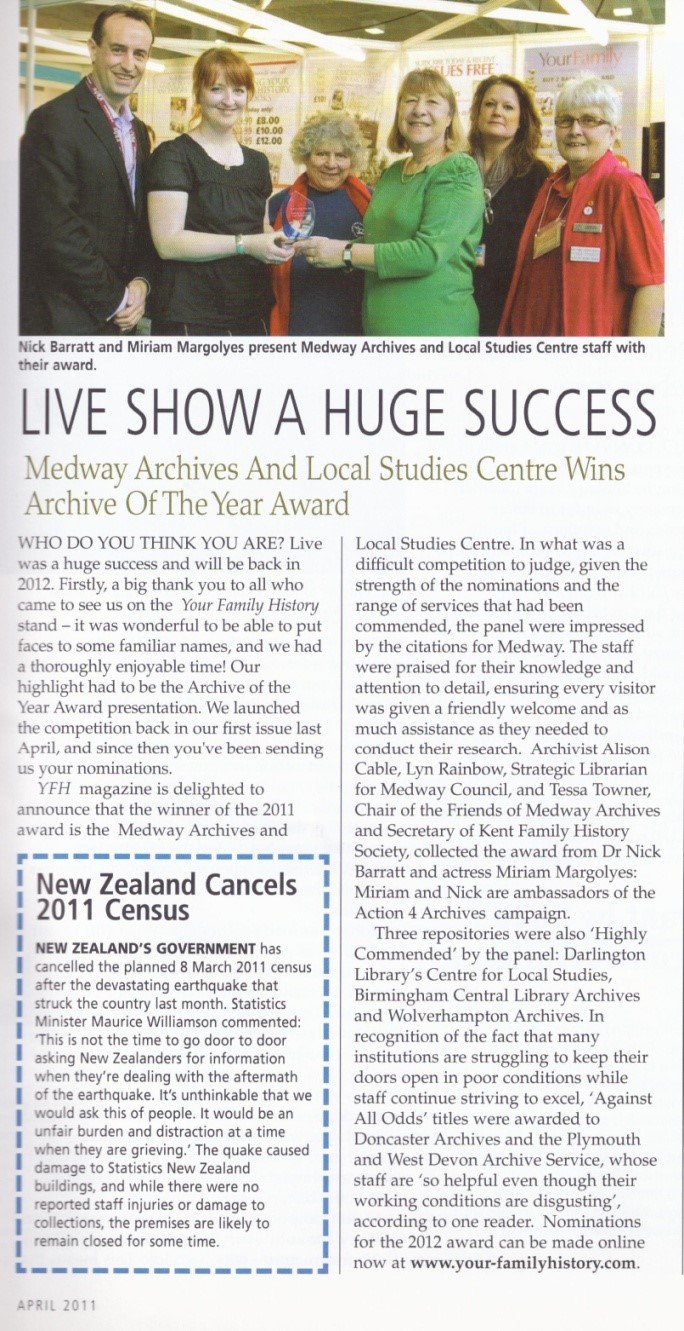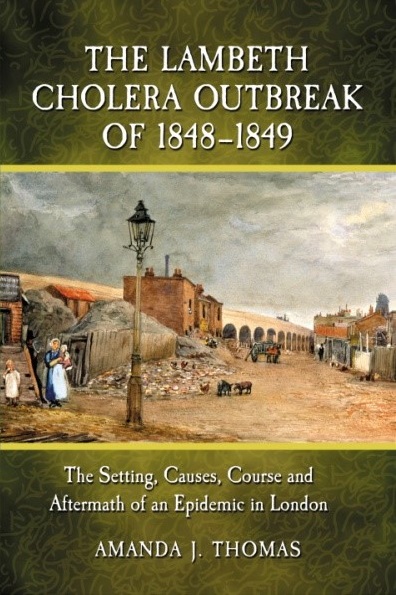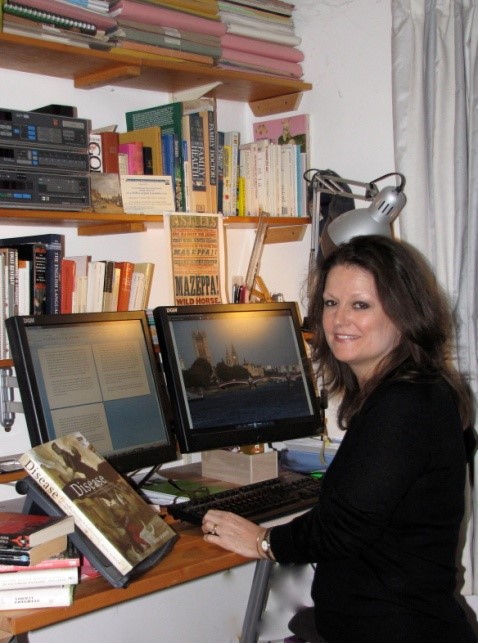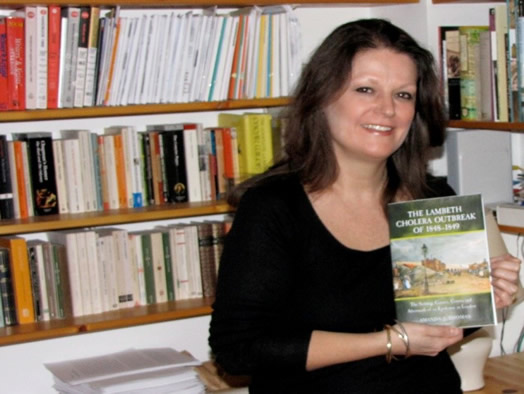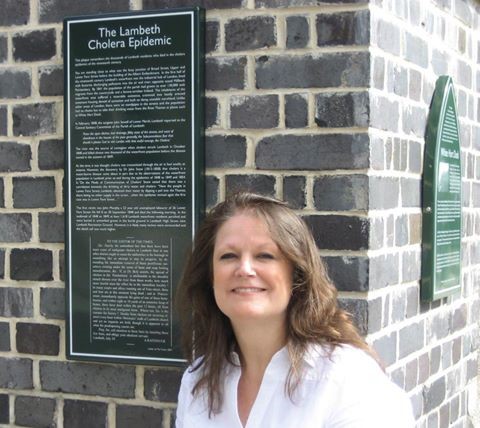FOMA's commemorations of World War One continued at the end of September as Tessa Towner and I joined the much anticipated gathering of descendants of the Live Bait Squadron.
Many of you will now be familiar with the name Henk van der Linden, a Dutch economist, who one day in 2004 strayed into the war graves cemetery in The Hague. He was on his way to a meeting but could not find a parking space and parked near to the cemetery. This chance decision led him to discover the story of Chatham's three cruisers: HMS Aboukir, Hogue and Cressy.
Henk calls this the start of Our Road to Chatham, and on 21 September 2014 the end of that long road was almost in sight. It was a beautiful late summer's afternoon when guests began to arrive at the St. George's Centre, Pembroke Barracks, at Chatham Historic Dockyard. This was to be the first day of commemorations and celebrations of the lives of the 1,459 men and boys who perished in the space of a few hours in the North Sea on the morning of 22 September 1914.
There was not a seat to spare in the old Dockyard church and once Henk had welcomed everyone in Dutch and English, he called out the name of each of the cruisers, to which descendants were to respond, 'Here!' Each response was unexpectedly emotional, for it was as if the voices of those who had perished a hundred years before were calling out to us, the dead making themselves present at our gathering. Cllr. Barry Kemp, the Mayor of Medway, and Mrs. Ann West, Deputy Lieutenant of Kent, representing HM The Queen, were invited to speak, and then Henk returned to the lectern to begin his presentation. Henk spoke about the early years of his research, the highs and the lows, and then the breakthrough moment in 2008 when he began writing his book, Live Bait Squadron (ISBN 978-9461532602) and realised that it should be the men on the cruisers who 'should tell the story, should be the heart of the book.'
The original Dutch version of the book was to be launched at a special commemoration on 16 September 2010 at the Municipal Cemetery in The Hague, the place Henk had found himself back in 2004 and where the story had begun. A member of the Mayor's staff who had contacted Henk to organise the commemoration recognised him as one of his personal heroes, the author of the much-admired school books Henk had written on economics. The tide began to turn. Dutch radio and the press started to take an interest and as a result the descendants were found of Captains Roelof Voorham and Joop Berhout, the respective masters of the rescue vessels SS Flora and SS Titan. Momentum grew and the book launch became a far more formal commemoration ceremony than had originally been anticipated.
From this moment on Henk began to receive correspondence from more Live Bait descendants, but not all the information he received was good. In 2010 reports began to emerge of metal salvagers on the wrecks of the three cruisers at the bottom of the sea.
In 2011, the second edition of the book was printed, this version having been translated from Dutch into English. At about this time Henk was to discover that diving was permitted at the wreck site and it was through the Duik de Noordzee Schoon (Dive the North Sea Clean) that he learnt there was a budget available for filming and they could make a documentary about the cruisers. From that moment on a camera crew, led by diving enthusiast Klaudie Bartelink, was to follow him along his Road.
At the end of this same year, Henk received an email from Alice Barrigan regarding her ancestor, 15 year old midshipman Duncan Stubbs, who had perished on board HMS Aboukir and whose remains have never been found. Then in January 2012 Henk was contacted by Barry and Brenda Mack about Gunner William James Shrubsall RN, aged 40, who had also perished on board HMS Aboukir.
These descendants were to become a driving force for the dissemination of the Live Bait Squadron story. Alice's family had inherited Duncan Stubbs' sea chest which he had been prevented from taking on board the Aboukir as it was too large. The box contained many treasures including written evidence of Stubbs' friendship with Shrubshall, something Barry Mack was not aware of. Duncan's father, Major Stubbs had written:
'Duncan and the gunner Mr. Shrubsole [sic] were great friends and took the watch together. Lt. Hughes wanted to change Duncan’s watch for some reason but Mr. Shrubsole would not hear of it; he liked to hear Duncan talk at night and would not have any other midshipman with him. Hughes said that when he was in his hammock he could hear the two talking on watch and Duncan’s laugh could be heard all over the ship.'
Descendants continued to join Henk on his Road which was to take an interesting turn when it came to organising the book launch for the English imprint. Henk had placed an advertisement in the Medway Messenger asking for information and it was this which Tessa Towner, FOMA's Chairman, responded to and which began our own involvement. Tessa told Henk about her work on the De Caville index which included many of those who had served on the three cruisers. Thanks to this and FOMA's help, some 80 relatives representing 20 cruiser crew members eventually attended Henk's book presentation at the St. George's Centre in 2012 and the Turning the Page Ceremony at Rochester Cathedral (see The Clock Tower, Issue 28, November 2012.)
Henk realised that the descendants needed a focus for their stories and a means to find each other to share information, and thus the Live Bait Squadron Society was formed (www.livebaitsqn-soc.info/). Barry Mack and John Tice (the grandson of survivor William (Billy) Tice, a Petty Officer Stoker on HMS Hogue) wrote to the Daily Mail. The publicity which this generated uncovered even more descendants, including those of Kapitänleutnant Otto Weddigen, captain of the U-boat U9, which had fired the torpedoes at the cruisers that fateful September morning. For this, Weddigen had been awarded the Orden Pour le Mérite medal, or the Blue Max, Prussia's highest military award.
In 2013 Henk received a letter from the Lord Lieutenant of Kent and Chatham Historic Dockyard. Plans to commemorate the one hundredth anniversary of the sinkings were being considered, but to move things forward they needed Henk to be part of the Centennial Team. Whilst all of this was going on, Klaudie Bartelink and her team had continued work on the documentary with a view to screening it at the commemorations. Everything was falling into place.
At this point in Henk's talk at the St. George's Centre the lights were dimmed for the inaugural screening of the documentary. Narrated by Roger Thurman, the film is to be shown on Dutch television in October or November. The film tells the story of the Live Bait Squadron, focussing in large part on the stories of individuals, none of which would have been possible had the descendants of those people not got in touch with Henk. Whilst Otto Weddigen's story proved fascinating, it was the story of Duncan Stubbs and his friend W.H. Wykeham-Musgrave, known as Kit, which took centre stage. The 15 year old cadets from Dartmouth Naval College survived all three sinkings only to be drowned attempting to save the life of another, older man. The story was taken up by Stubbs' great nephew and Alice Barrigan's son, also named Duncan, a keen diver who was filmed diving down to the wrecks with the rest of the team. The documentary was breathtaking and there were few dry eyes in the St. George's Centre as the titles rolled to loud applause.
Klaudie Bartelink then took questions from the floor and this gave the descendants a further opportunity to tell their individual stories and ask others for lost pieces of information. There was also much discussion about the salvage work going on in the North Sea and the desecration of the graves of the crews of the cruisers, all of which had been highlighted in the documentary. Archaeologist, Andy Brockman, took to the floor and explained how the wheels were in motion to recognise the site as an official war grave. As yet no official announcement had been made, but there was some considerable pressure for this to happen as quickly as possible. This was a subject to which everyone would return over the next few days.
At the close of Sunday's proceedings, Henk made his concluding remarks:
'Someone picked me to take this road. I don't know who. It is what it is.'
Guests remained in the Centre for refreshments and an opportunity to talk and look at the photographs of the crew members Tessa Towner had put on display. Many of the guests were staying at the Ramada Hotel in the Historic Dockyard and here discussions continued well into the evening.
The following day, 22 September, and the one hundredth anniversary of the sinkings, guests were hushed over breakfast at the Ramada. It was not that everything had been said the previous day or that they were tired, but the anniversary was upon us and the morning was a time to reflect. The Dockyard was open at 10 am for everyone with a ticket for the commemoration ceremony to be able to look around free of charge. Visitors arriving for a day out and unaware of what was going on were also thrilled to discover that entry was free. Tessa and I were joined by Elaine Gardner and after lunch we and the other thousand guests made our way to the No.5 Covered Slip for the commemorative Drumhead Service. All the descendants had been given enamel badges to wear by the Historic Dockyard to indicate their affiliation with each cruiser: yellow for HMS Hogue, blue for HMS Cressy, and red for HMS Aboukir. Some wore more than one badge as many of the men had swum from vessel to vessel in an attempt to save themselves.
Around us were many familiar faces, but we were particularly thrilled when the VIPs began to enter to spy FOMA Vice President Sue Haydock arrive with Vice Admiral Sir Timothy Laurence, the husband of Anne, the Princess Royal. Then we heard The Band of Her Majesty's Royal Marines (Commando Training Centre Royal Marines) Lympstone as they began their progress into the Covered Slip. It was an exciting moment. Their entrance was followed by HRH The Duke of Kent, The Lord Lieutenant of Kent, The Viscount De L’Isle MBE and Admiral Sir Ian Garnett, Chairman of Chatham Historic Dockyard Trust.
The service was led by The Right Reverend Dr. Stephen Venner DL and The Reverend Scott Brown, Chaplain of the Fleet and following an introductory prayer, the congregation sang 'Lead us, heavenly Father, lead us.' The drumhead was built and the standards were presented. The Bishop introduced the service, reminding us all why we were there:
'...to remember all those who were caught up in the courageous but tragic events of the First World war, especially for the crews of HMS Aboukir, HMS Hogue and HMS Cressy, three Chatham Division Cruisers. We remember all those who were killed in action, or by disease, the bereaved, the lost, the families who were shattered, the wounded, maimed and injured, those who held in silence unspeakable memories of warfare...we remember those who fought and those who remained anxiously at home in this community...'
The Duke of Kent unveiled a plaque to commemorate the sinking of the cruisers and we then listened to a reading by Julie Cook, the granddaughter of John Richard Back who was lost in HMS Cressy. Julie read extracts from a contemporary account of the action. Admiral Sir George Zambellas, First Sea Lord and Chief of the Naval Staff rose next to read from Ecclesiaticus. More hymns and prayers followed and then Henk van der Linden got to his feet.:
'I call upon the Mayor of Medway to pass a traditional commemorative poppy wreath to the Mayor of the Hague with the request that this wreath be taken by him and laid on behalf of the people of Medway at the Municipal Cemetery, Den Haag on Wednesday 24th September in remembrance of the loss of the three cruisers HMS Aboukir, HMS Hogue and HMS Cressy.
The mayor of Medway represents the people of Medway who recognise and thank the Dutch people for their rescue of and kind acts in caring for the survivors from His Majesty's Ships Aboukir, Hogue and Cressy and also to remember the 1,459 men lost in the action of 22nd September 1914 of which 1,264 were from the Chatham Port Division.
The handing of this wreath to the Mayor of The Hague symbolises the connection between the people of Medway and the people of The Hague today, a connection made stronger by the history of one hundred years ago.'
The final moments of the ceremony were the most moving. The Act of Remembrance was read by Cllr. Barry Kemp the Mayor of Medway and the Mayor of The Hague's representative. Poppy petals fell, the Last Post was played and the Covered Slip fell completely silent.
Following the service guests mingled again over refreshments and to bring the day to a close everyone gathered on Museum Square for Beat Retreat by the Royal Marines Band which had so brilliantly played at the ceremony.
Tuesday 23 September was Travel Day according to Henk's itinerary. Tessa and I met early at St Pancras International Station, ready to board the Eurostar train for Brussels where we would change for The Hague. Thanks to a broken down locomotive we arrived at our destination, the coastal resort of Scheveningen, slightly later than anticipated, but it didn't matter as we were excited to have arrived, buoyed by the bracing sea air and the many wonderful people we had met on the journey.
Wednesday 24 September was the final day of the commemorations. Not all of those who had attended in Chatham had decided to come on to Holland, and those who had made the journey were scattered across the area in different hotels. It was therefore a slightly strange experience to arrive at Muzee Scheveningen to be greeted by familiar faces. The Muzee was a fabulous showcase for local history and we were greeted most warmly by everyone, including Henk, of course. The Live Bait commemorations had taken over much of the museum and we were ushered into a lovely room set for lunch. The Dutch hospitality was overwhelming, and straight away we were presented with a wonderful selection of rolls and open sandwiches full of Dutch ham and cheese, jugs of milk and fresh orange juice, followed by fruit and steaming coffee. It was exactly what everyone needed.
We were all sitting in quite different groups to how we had been on Sunday at the St. George's Centre, as by now everyone knew everyone else. However we very soon became aware that the occupants of one of the tables were only recognisable from the documentary, as these were the descendants of the U9 Kapitänleutnant Otto Weddigen.
Following lunch, the room was rearranged so that we could sit in rows. We were welcomed by the Chairman and CEO of the Muzee, Henk Grootveld and Paul de Kievit, and Henk van der Linden, who also introduced the start of the mini conference. Tessa was the first to speak and explained how FOMA's work on the De Caville Index had played a key role in the story of the past few years and the discovery of so many of the descendants who had come to the ceremonies in Chatham and The Hague. Next to speak were Dr. Richard Porter and Dr. Jane Harrold, Curator and Deputy Curator and Archivist respectively of The Britannia Museum, Britannia Royal Naval College, Dartmouth. Together they told the story of the teenage boys, the so-called Lost Term from Dartmouth, who had been called up and were lost on the three cruisers. From Aboukir there were Cadets J.D. Stubbs, G. Gore-Brown, G.B. Barchard, A.V.G. Allsopp, H.L. Riley, and A.D.C Robertson. From Cressy there were Midshipmen C.P. Dalmege, V.H. Corbyn, F.G. Matthews, and J.A. Froude, and from Hogue there were Midshipmen H.H. Ward, G.C. Harold, and C.W. Holt.
Henk Grootveld and Paul de Kievit were swiftly on their feet again to announce the official opening of the Live Bait Squadron exposition. Henk was presented with a silk tie to commemorate the occasion and guests then progressed to the upper level of the Muzee to see for the first time the artifacts, displays and information associated with every aspect of the Live Bait story.
At 3 pm, following wine, canapés and more coffee, we were all on the move again, boarding coaches outside the Muzee to take us all to the Den Haag Municipal Cemetery. Here we were escorted to another reception area where cakes and more drinks were waiting for us. We could not have been made to feel more welcome. Speeches were given by dignitaries from The Hague, including the British Ambassador to the Netherlands, Sir Geoffrey Adams, the Deputy Mayor of The Hague Tom de Bruijn, and Cllr. Barry Kemp the Mayor of Medway.
Sadly as we listened to Barry Kemp's words we were all aware that the light had dimmed and the rain had begun to fall outside. However, no matter, as Henk van der Linden was on hand with umbrellas for everyone and we slowly progressed outside for the laying of the wreaths. The rain added to the sombre atmosphere as wreath after wreath was brought to the spot where some of men of the Live Bait Squadron now lie: wreaths from the people of Britain, the Netherlands, from Germany, and of course the wreath from Medway, which had been brought from Chatham. Then with bunches of flowers came the descendants of the fallen, and perhaps most poignantly, the Wennigen family. We stood in the rain for the Last Post and contemplated the past few days as silence fell.
More food and drink arrived when we returned to the reception area of the cemetery and then we all boarded the coach back to the Muzee where we said our final farewells. There was to be a screening of the documentary in the evening, but most of those attending would be the Dutch who had not yet seen it, and the Barrigans.
It had been an extraordinary few days and the beginning of the healing process for the descendants. Henk van der Linden had given them the opportunity to share their stories and their grief. They had been able to meet and thank the families of the SS Flora and SS Titan , but also discover that they too had grieved over the years in the knowledge that the crews of their ancestors' boats had had to choose who to save from the sea. Finally, everyone had had the opportunity to meet the family of Otto Wennigen. For some it was too much to bear, but for others it was important and necessary and they were able to forgive and even start to forget.
